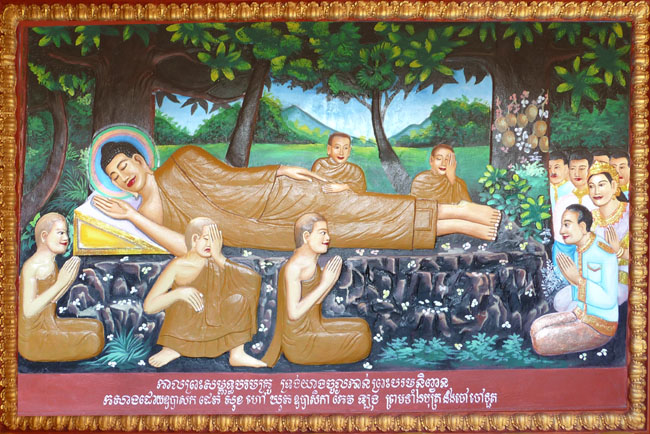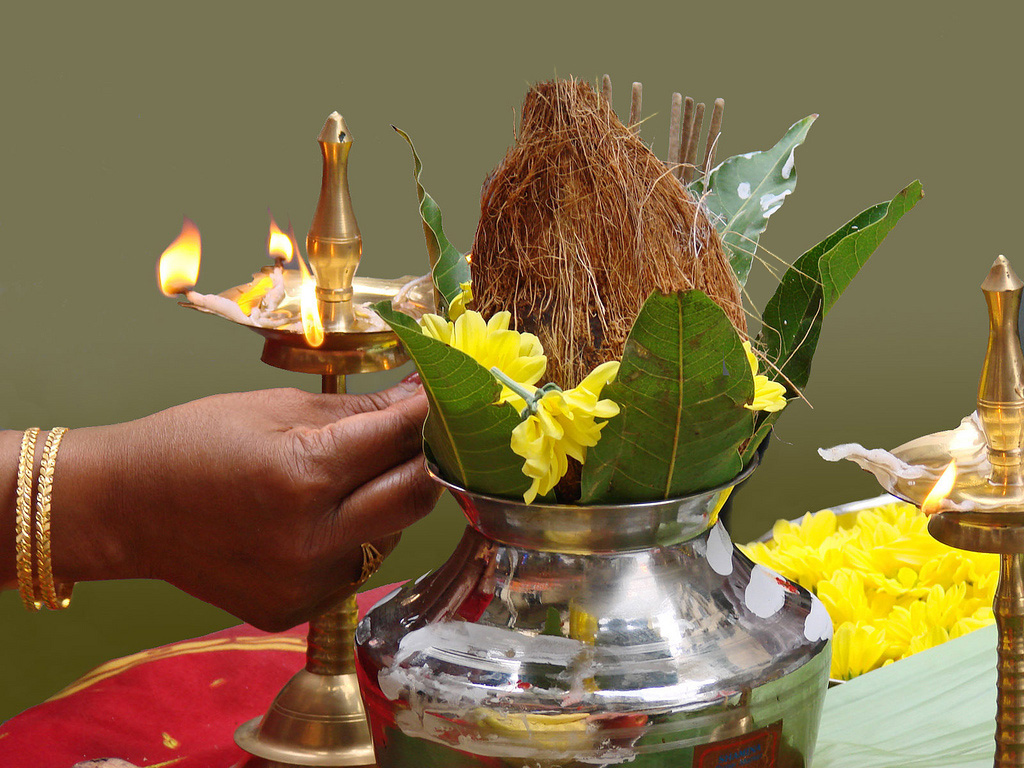Food for Thought: Unpeeling the Mango’s Interesting History in India
Who doesn't love mangoes? But did you know the sinfully delicious fruit had ancient Indians and Mughal emperors under its spell too?

Mangoes have delighted people’s senses with their sweet fragrance and flavour for ages. However, while Indians have been cultivating this juicy fruit for more than 4000 years, the Western world has savoured it only for the last 400!
If you are curious about its origins, here is the interesting journey of the mango in India over the years.

Photo Source
History yields some very interesting facts about this celebrated fruit. The mango has been known to Indians since very early times. Scientific fossil evidence indicates that the mango made its first appearance even earlier – 25 to 30 million years ago in Northeast India, Myanmar and Bangladesh, from where it travelled down to southern India.
The earliest name given to the mango was Amra-Phal. It is also referred to in early Vedic literature as Rasala and Sahakara, and is written about in the Brihadaranyaka Upanishad and the Puranas, which condemn the felling of mango trees. On reaching South India, the name translated to Aam-Kaay in Tamil, which gradually became Maamkaay due to differences in pronunciation. The Malayali people further changed this to Maanga. The Portuguese were fascinated by the fruit on their arrival in Kerala and introduced it to the world as Mango.
In ancient India, the ruling class used names of mango varieties to bestow titles on eminent people – like the honour given to the famous courtesan of Vaishali, Amra Pali. The mango tree was also associated with the god of love, Manmatha, and its blossoms were considered to be the god’s arrows by the Hindu Nanda Kings. It was during the Nanda rule that Alexander arrived in India and fought the famous battle with King Porus. When it was time for him to return to Greece, he took with him several varieties of the delicious fruit.
With the rise of Buddhism, mangoes came to represent faith and prosperity among the religion’s followers, as there were several legends about the Buddha and mango trees. Among Buddhist rulers, mangoes were exchanged as gifts and became an important tool of diplomacy. During this period, Buddhist monks took mangoes with them wherever they went, popularising the fruit.
Legend has it that the Buddha was presented with a mango grove so he could rest under the shady trees.

Photo Source
Megasthenes and Hsiun-Tsang, the earliest writer-travellers to ancient India, wrote about how the ancient Indian kings, notably the Mauryas, planted mango trees along roadsides and highways as a symbol of prosperity. They also wrote about the incredible taste of the fruit, bringing the mango to the notice of people outside India. The Munda tribals and the Dattaraya sect of Swamy Chakradhar were also instrumental in taking this decadent fruit to the masses of ancient India.
In the medieval period, Alauddin Khilji was the first patron of the mango and his feast in Sivama Fort was a real mango extravaganza with nothing but mangoes in different forms on the lavish menu. Next came the Mughal Emperors, whose fondness for the mango is legendary. The obsessive love for mango was, in fact, the only legacy that flowed untouched from one generation to another in the Mughal dynasty.
The first Mughal, Babur, was reluctant to face the feared warrior Rana Sanga of Mewar, despite Daulat Khan Lodi’s promises of a good part of his empire and war booty. It is said that Lodi then introduced Babur to the mango, a fruit he became so fond of that it convinced him not only to face Rana Sanga but to also lay the foundation of his empire in India!
While on the run from India to Kabul, Humayun ensured a good supply of mangoes through a well-established courier system. Akbar built the vast Lakhi Bagh near Darbhanga, growing over a hundred thousand mango trees. This was one of the earliest examples of grafting of mangoes, including the Totapuri, the Rataul and the expensive Kesar.
Shah Jahan’s fondness for mangoes was so deep that he had his own son, Aurangzeb, punished and placed under house arrest because the latter kept all the mangoes in the palace for himself. It was also mangoes that Aurangzeb sent to Shah Abbas of Persia to support him in his fight for the throne.
The famous Persian poet Amir Khusrau called the mango Naghza Tarin Mewa Hindustan, the fairest fruit of Hindustan.

Photo Source
The Mughals relished their favourite addiction, with Jahangir and Shah Jahan awarding their khansamahs for their unique creations like Aam Panna, Aam ka Lauz and Aam Ka Meetha Pulao, a delicate mango dessert sold all through the summer in Shahjahanabad. Nur Jahan used a mix of mangoes and roses to create her legendary wines. The yellow-golden Chausa Aam was introduced to celebrate Sher Shah Suri’s victory over Humayun, while the luscious Dussehri Aam owes its birth to the Rohilla chieftains.
The Peshwa of the Marathas, Raghunath Peshwa, planted 10 million mango trees as a sign of Maratha supremacy. Folklore has it that it was a fruit from these trees that eventually turned into the famous Alphonso, the king of mangoes. The advent of Europeans eventually affected the mango, which fell from its position of empire builder to simply a fruit – the British had no use for it in matters of diplomacy. Though it retained its superiority of taste, many varieties disappeared from the scene while several new ones emerged.
The Mulgoa mango is the outcome of Portuguese experiments with new varieties of mango, a result we cherish today.

Photo Source
Over the ages, the mango became a household fruit and odes were sung in its praise. Rabindranath Tagore was extremely fond of mangoes and has written several poems about the fragrant flowers of mangoes, including the very famous aamer monjori. Legendary Urdu poet Mirza Asadullah Khan Ghalib was a mango aficionado too; he despised people who didn’t share his addiction for the fruit.
Today, the curvaceous shape of mangoes, which has long held the fascination of weavers and designers, has become an iconic Indian motif. The mango is seen as a symbol of good luck and prosperity and in many parts of India mango leaves are strung up over the front doors of homes as Toran.
A Purnakumbha is a pot filled with water and topped with fresh mango leaves and a coconut. It is considered to be the foundation of a puja, with the mango leaves symbolising life.

Photo Source
Childhood memories for many Indians include precarious attempts to pick elusive mangoes, dangling enticingly from the branches of fruit laden trees. Every summer, the heady smell of mangoes ripening on trees and the velvety taste of home-made aamras bring happiness to countless Indian homes. It’s no wonder then that the mango is rightfully called the king of fruits.
With mango festivals being celebrated in Ahmedabad, Lucknow, Allahabad, Delhi, and Goa, mangoes in India have become a symbol of summer and are no less than a cultural legacy. Noted mango cultivator Haji Kalimullah has even named a new variety, a cross-breed of Kolkata’s Husn-e-Aara and Lucknow’s Dussehri, as the “Modi Mango” !
Featured image photo source
Like this story? Or have something to share? Write to us: [email protected], or connect with us on Facebook and Twitter (@thebetterindia).
This story made me
- 97
- 121
- 89
- 167
Tell Us More
We bring stories straight from the heart of India, to inspire millions and create a wave of impact. Our positive movement is growing bigger everyday, and we would love for you to join it.
Please contribute whatever you can, every little penny helps our team in bringing you more stories that support dreams and spread hope.



















